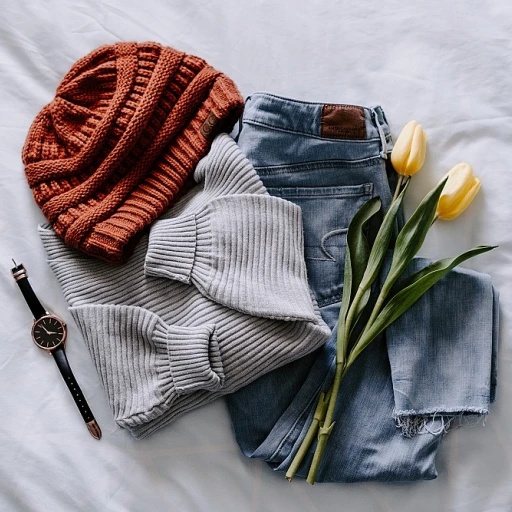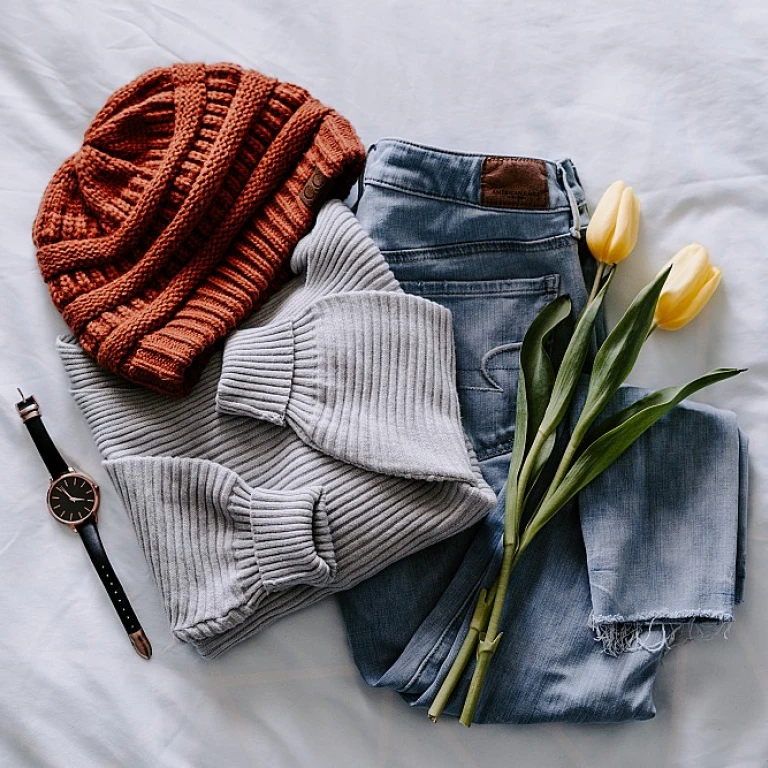Understanding Tog Ratings and Baby Sleep
The Importance of Understanding Tog Ratings
As a caring parent, ensuring your baby gets a restful night's sleep is undoubtedly a top priority. One essential factor in achieving this is understanding TOG ratings, which can sometimes be perplexing for first-time parents. TOG, standing for Thermal Overall Grade, is a unit that measures the thermal insulation of a garment. For baby sleepwear, this means how warm the clothing will keep your baby.
TOG ratings range from around 0.5 – ideal for warm weather or summer use – to approximately 3.5, which is suitable for colder climates. By understanding these ratings, you can better choose the right sleepwear depending on the room temperature, thus ensuring your little one stays comfy throughout the night.
When you're navigating through various baby sleepwear options, it's also vital to consider other factors. For instance, even if you're browsing an
infant baby girl clothes trend, always make sure you're aware of the garment's TOG rating to make an informed decision.
Armed with knowledge about TOG ratings, you can further explore how to dress your baby for different room temperatures and conditions, ensuring they're neither too hot nor too cold. This understanding also plays a crucial role when considering sleep bags and sacks, which we will delve into later, for safe sleeping practices.
Dressing Your Baby for Various Room Temperatures
Keeping Your Little One Comfortable in Varied Room Climates
When it comes to ensuring your baby has a cozy and safe sleep, understanding the ideal clothing layers for different room temperatures is key. Most parents know the struggle of striking the perfect balance—too many layers can lead to overheating, while too few can result in a chilly, restless night.
The core principle to remember is simplicity. A room that is on the warmer side (around 24°C or 75°F) calls for light sleepwear, like a single layer cotton onesie. On the other hand, if the room tends to be cooler (18°C or 65°F), consider adding extra layers like a cotton footed sleeper combined with a sleep bag of an appropriate TOG (Thermal Overall Grade) rating. These can provide warmth without causing your baby to overheat.
Pay attention to sudden changes in weather as well, since a dip in temperature may require adjustments to your baby's nighttime attire. It's also wise to keep a thermometer handy in the nursery to monitor these changes accurately.
For more insights, our article on the
best baby clothing subscription boxes can offer creative solutions for accessing season-appropriate sleepwear throughout the year.
Remember, ensuring your baby is comfortably dressed for the night is a crucial step towards a restful and uninterrupted sleep for both you and your little bundle of joy.
Choosing the Right Sleep Clothes for Newborns
Selecting Sleepwear: Comfort and Safety for Your Newborn
When it comes to dressing your newborn for a restful night's sleep, comfort and safety should be your top priorities. Understanding tog ratings and the correlation with room temperatures, as previously discussed, lays the foundation for selecting appropriate baby sleep clothes.
Newborns have delicate skin and their bodies regulate temperature differently than older children or adults. Therefore, clothing made of breathable, soft materials such as organic cotton is highly recommended. These materials help to prevent skin irritation and allow the baby's skin to breathe better, reducing the chance of overheating.
One essential aspect to consider is whether your newborn's sleepwear has any irritating seams, tags, or buttons that could disrupt their slumber. Opt for sleepwear with flat seams and tagless designs to ensure maximum comfort. Additionally, dressing your newborn in sleep sacks can be an ideal option. Not only do they promote safe sleep by eliminating the need for loose blankets, but they also provide a consistent warmth that can be easily adjusted with different tog ratings.
For more comprehensive insight into building a versatile wardrobe for younger family members, including information about incorporating various sleepwear options, check out our guide on how to
build a capsule wardrobe for your pre-teen. This resource can offer valuable tips applicable to both your newborn and older children in your household.
Ultimately, attuning to your newborn's unique needs during sleep time will help foster a comfortable, safe, and peaceful sleeping environment. Keep in mind that regular checks throughout the night are crucial in ensuring that your baby remains at an appropriate temperature, thus preventing both discomfort and health issues.
Signs Your Baby is Too Hot or Cold at Night
Identifying the Signs
When it comes to ensuring your baby's peaceful slumber, knowing whether they are too hot or too cold is crucial. While previous sections highlight important factors like TOG ratings and suitable sleep clothes for varying temperatures, it's equally essential to observe your baby closely to stay responsive to their needs.
One of the most straightforward indicators is touching your baby's skin. Gently feel your baby's neck, tummy, or back – these areas provide the most accurate sense of their body temperature. If your baby is too warm, their skin may be sweaty or feel hot to touch, and you might notice flushed cheeks or damp hair. These signs suggest it's time to adjust their sleepwear layers or room temperature.
On the other hand, if your baby feels cool to the touch, particularly on their hands and feet, or appears to have a bluish tint to their skin, they might be too cold. Keep in mind that minor coolness of the extremities does not always indicate coldness since babies often have cooler hands and feet naturally. Instead, trust the temperature of their core body area as a reliable guide.
Of course, while monitoring these physical cues, pay attention to behavioral signals as well. A restless baby who struggles to settle might be uncomfortable due to temperature issues. Addressing these signs promptly, either by adding or removing layers, can help improve their sleep and in turn, give you peace of mind during those sleepy nights.
For personalized guidance and reassurance, you might also explore expert tips from trusted sleep coaches, who can provide insights tailored to your baby's specific needs. By understanding your little one's comfort signals and layering accordingly, you can ensure their sleeping environment is not only stylish but truly conducive to restful nights.
Using Sleep Bags and Sacks for Safe Sleep
Embracing the Benefits of Sleep Bags and Sacks
When it comes to ensuring your baby's safe and comfortable sleep, sleep bags and sacks have become an indispensable part of bedtime routines. These snugly designed sleep solutions are becoming a popular alternative to traditional blankets, providing a secure and cozy environment for your little one.
Sleep bags, often referred to as wearable blankets, come in various thicknesses and materials, making them an excellent choice to suit different tog ratings. As discussed earlier, understanding tog ratings is crucial in determining the ideal sleepwear for your baby, and sleep bags perfectly complement this practice.
One of the primary benefits of using sleep bags is the reduced risk of suffocation and overheating, common concerns with loose blankets. They eliminate the possibility of blankets covering your baby's face, promoting a safer sleeping environment. By ensuring the right fit and tog rating, these sleep sacks provide consistent warmth, eliminating the need for additional layers which can potentially lead to overheating.
Choosing the perfect sleep bag involves considering the room temperature and your baby's comfort. As mentioned, dressing your baby appropriately for the room's climate is essential. For cooler nights, opt for a thicker sleep bag with a higher tog rating. In contrast, warmer conditions call for lighter sleep sacks that allow for breathability.
In essence, sleep bags and sacks provide peace of mind for parents, knowing their baby is safely nestled in comfort throughout the night. By integrating this practical sleepwear into your child's sleep routine, you can experience stress-free nights as your baby drifts off into slumber land, snug as a bug.
Expert Tips from a Smart Sleep Coach
Insider Techniques from Sleep Experts
When it comes to ensuring a restful night for your baby, even seasoned parents can benefit from the wisdom of a smart sleep coach. A key takeaway from sleep experts is to create a consistent bedtime routine that signals to your baby it's time to wind down. This can include a calming bath, a gentle massage, or softly reading a bedtime story.
Another insightful tip is the importance of keeping your baby’s sleeping environment conducive to sleep. This means maintaining a comfortable room temperature, as discussed earlier, and dressing your baby in sleep clothes that match the room’s heat levels. Sleep experts also recommend investing in good quality sleep bags or sleep sacks that are designed to offer both warmth and mobility, ensuring your baby stays cozy without overheating.
A pro tip that many parents find helpful is monitoring your baby for signs of discomfort throughout the night. Rapid breathing or excessive sweating can signal that your baby is too warm, while cold extremities might indicate they’re too cold. Adjusting layers as needed is crucial for a good night's sleep. Remember, creating a safe sleeping environment helps prevent restlessness and offers peace of mind to everyone involved.
Embracing these expert tips can make all the difference in your baby’s sleep quality, contributing to their overall happiness and growth.

